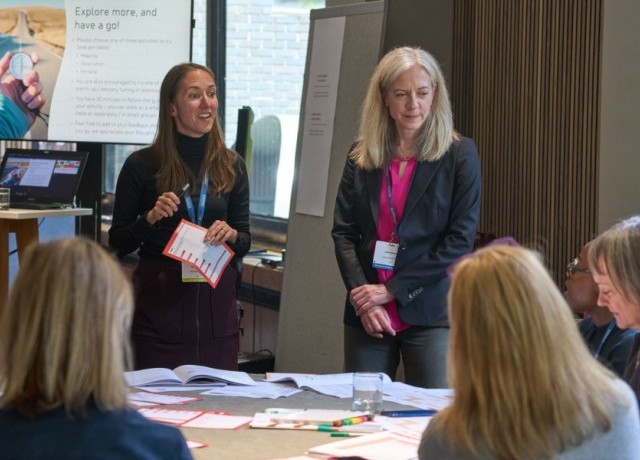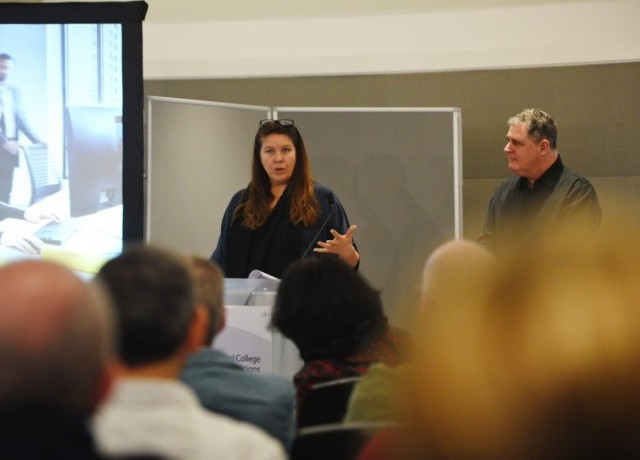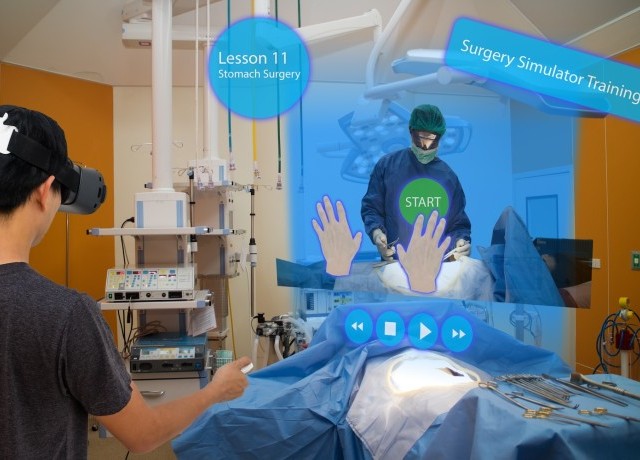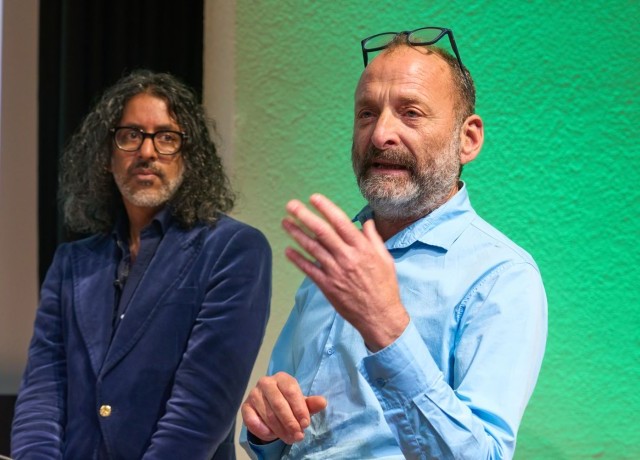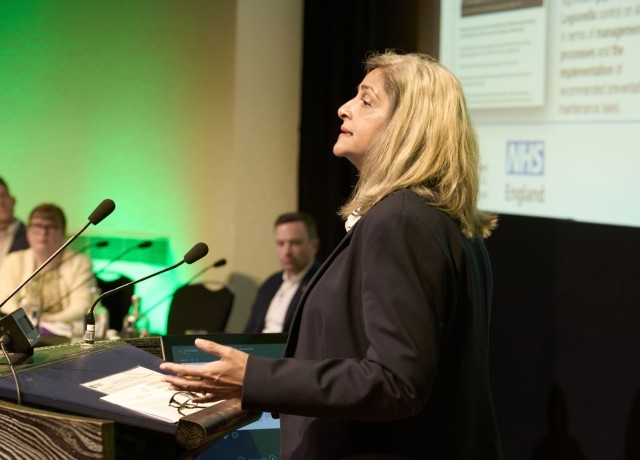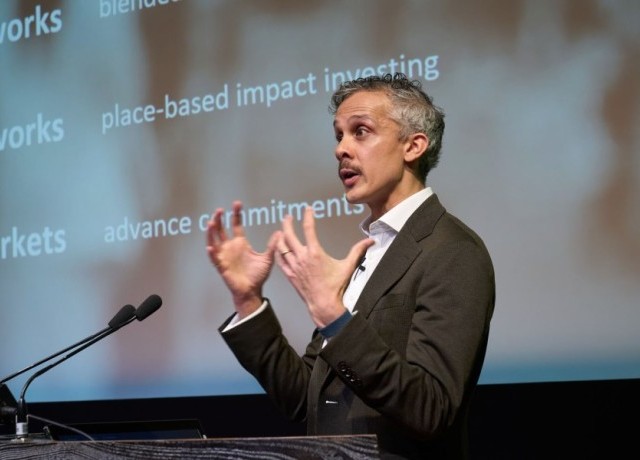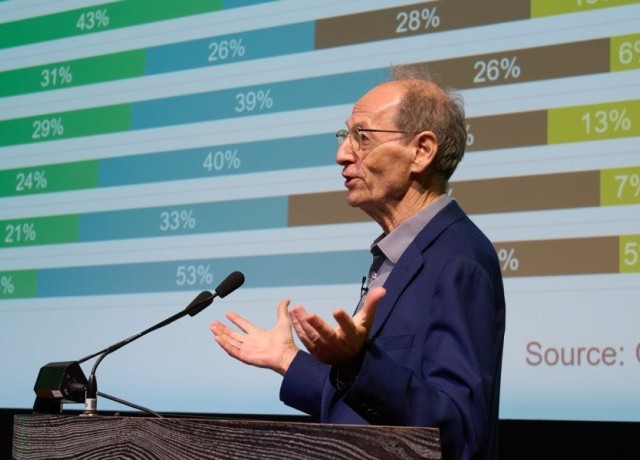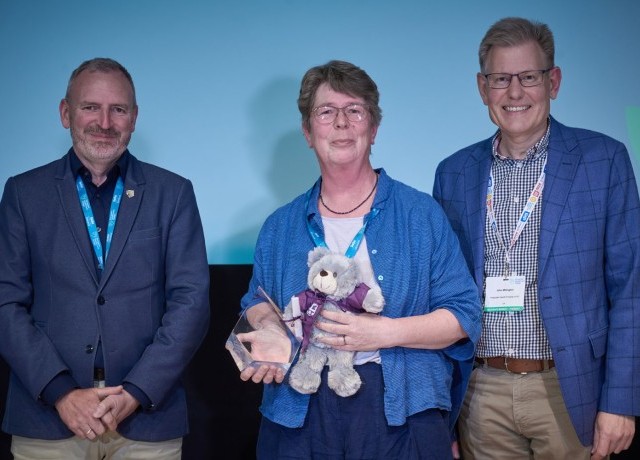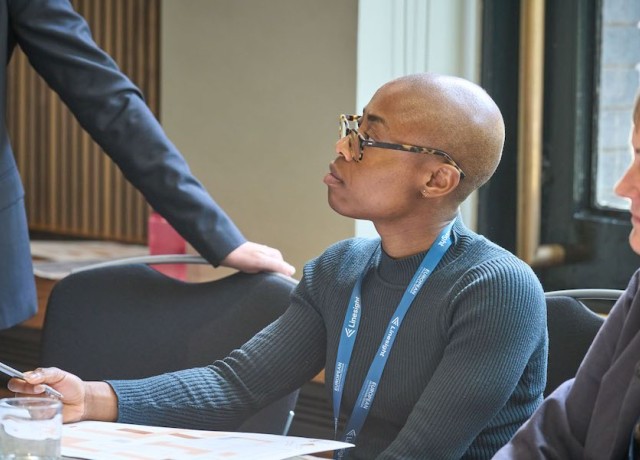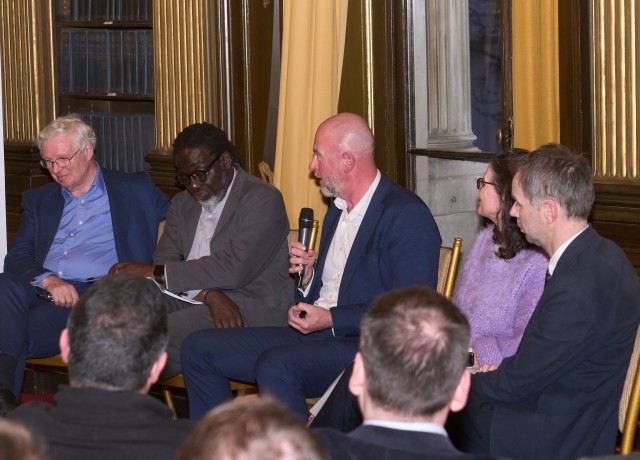
Keynote summary: Innovation in the future hospital
While there are those who question whether the growing use of technology and artificial intelligence (AI) might erode the human touch in healthcare, one surgeon believes that it could, in fact, make us more human.
Chief executive of Medical Realities Prof Shafi Ahmed, also known as “the virtual surgeon”, suggests that technology will provide clinicians with the gift of time –taking away the mundane tasks to allow more time to be spent with patients, improving access to care, and supporting greater training and learning to advance medical knowledge.
“The UK spends about 9 per cent of its GDP on healthcare,” said Prof Ahmed, addressing delegates at European Healthcare Design 2024 during a wide-ranging opening keynote. “The US is approaching 20 per cent. It’s unaffordable. How do we use innovation to use the same money in a different way?”
Traditionally, humans were assessed on IQ – their intelligence quotient. More recently, we introduced the idea of emotional quotient, or EQ. Now, we’re starting to look at people’s technology quotient. At the same time, technology at a broad level has introduced the concept of the user interface (UI) and the user experience (UX). However, little is said about the patient interface (PI) and the patient experience (PX).
“We’re changing from a hierarchy of care to patient-centred care, so the PI and PX should be your main USP,” Prof Ahmed asserted. “Everything we design around the patient interaction, we don’t think about enough.”
Pillars of modern healthcare
So, what does the future redesigned healthcare system look like, and what about the future hospital? “The first thing is we’re digital – 100 per cent,” he explained. “We’re super connected and live in the most connected world ever. We’re driven by data, which will be used by AI to drive new ways of working. And we’re integrated and focused on patient-centric design. So those are the five pillars of modern healthcare that we have to aspire to.”
Given that 90 per cent of the NHS’ £150bn budget goes towards secondary care, which performs 10 per cent of the work, technology offers a prime opportunity to tackle the inefficiencies and expense of a healthcare system built around treatment and sickness, and redirect it towards primary care, population health and, most importantly, preventive care. “So, the hospital needs to be transformed into the house-pital,” said Prof Ahmed. “Moving care away from the hospital – it has to be common care in the community and managing chronic diseases in a better way.”
Listing seven types of orchestrators of digital health ecosystems – payer-led; provider-led; health tech-led; medtech-led; pharmaco-led; pharmacy-led; and technology companies and new entrants – he asked what the role of the citizen should be within such healthcare ecosystems.
“We’re moving to a prevention lifestyle,” he explained. “Total triage telehealth and better management of chronic disease. If those can be better managed, or admissions or complications, you’re on to a winner. And there are two other elements – personalised care and remote monitoring.”
Driving change, empowering citizens
Arguing that surgeons are slow to change and need to be “driven and dragged across the altar of technology”, Prof Ahmed described some of the innovations taking place around the world in the virtual arena. They include Ping An, an insurance provider in China, which has 3 million users and performs more than 200,000 consultations a day; and the world’s first real virtual hospital, SEHA, in Riyadh, Saudi Arabia. “During Covid, they rebuilt the healthcare system, built a full virtual hospital, all virtual clinics inside and remote connections to all the networks across Saudi Arabia,” he explained, who himself has been carrying our remote ward rounds since 2015 using electronic health records and a telemedicine platform on his iPad.
In China, small mobile units are located in communities, allowing people to have their biometric data, blood pressure, pulse, and other health readings taken, while seeing a doctor on a screen. If the doctor prescribes the patient a tablet, they simply use their smartcard on a connected vending machine and out comes the medicine. Similarly, across the United States, self-contained, data-driven AI doctors’ offices are popping up, providing 24/7 mobile access and shifting the health paradigm towards preventive health.
Indeed, with the growth of wearables and sensors, allowing the measurement of biometric data and physiological data, patients are becoming increasingly empowered. “There is something called the ‘Quantified Self’,” said Prof Ahmed. “Sooner or later, we’ll be a bunch of numbers that predict chronic disease, risks, outcomes. AI in healthcare will be the power driving what we do going forward. We’re seeing it used for chatbots, conversation engines, diagnostic imaging, drug discovery, etc.”
But, unsurprisingly for a futurist whose stated mission is to merge the world of medicine, global education, and virtual and augmented reality, it’s the virtual world where he sees healthcare accelerating towards.
While a relatively new term in the mass consciousness, the word “metaverse” was coined more than 30 years ago, appearing in Neal Stephenson’s science-fiction novel, Snow Crash, which described a dystopian society that was fundamentally broken. But far from an escape, the metaverse and virtual reality also offers vast opportunity to connect like never before and enhance our physical world, illustrated by a video showing Prof Ahmed consulting with surgeons in London, India and the USA live in the operating theatre, and using mixed reality HoloLens technology to perform bowel cancer surgery. Each surgeon could access the patient’s records and see each other’s feed while acting as avatars in their world.
“Forget bricks and mortar,” he proclaims. “The virtual world is where we’re heading towards. It’s Web 3.0 – the 3D internet, where we own our own data, it’s decentralised, and we access it in a different way.”
Event news
Actions to improve urban renewal and health equity
2nd September 2024
A vision for Liverpool: Putting people’s health first
2nd September 2024
Investing in urban renewal and health equity
21st March 2024
Health equity: Marmot Cities
20th March 2024

